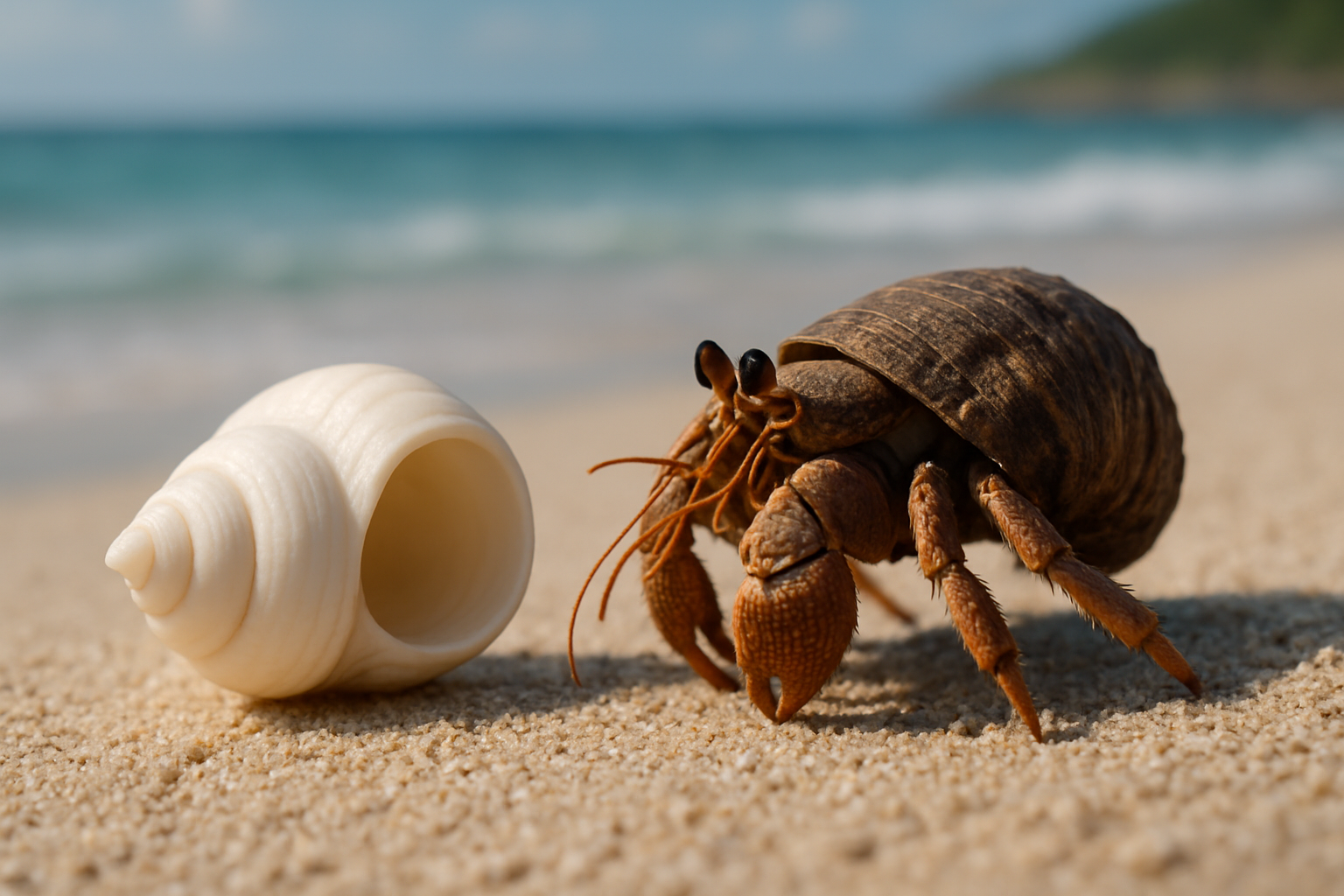The Surprising World of Hermit Crab Shell Selection
Hermit crabs, those fascinating crustaceans known for their borrowed homes, have long captivated beachgoers and marine enthusiasts alike. But beneath their unassuming exterior lies a complex world of decision-making, competition, and adaptation. This article delves into the intriguing process of shell selection among hermit crabs, revealing the surprising factors that influence their choices and the impact of these decisions on their survival.

The Evolution of Shell-Dwelling Behavior
The story of hermit crabs and their shell-dwelling behavior dates back millions of years. Fossil evidence suggests that these crustaceans began inhabiting mollusk shells as early as the Jurassic period, roughly 200 million years ago. This adaptation allowed hermit crabs to protect their vulnerable abdomens while maintaining mobility, giving them a significant evolutionary advantage.
Over time, hermit crabs developed specialized appendages and behaviors to facilitate their unique lifestyle. Their curved abdomens evolved to fit snugly inside spiral shells, while their powerful claws became adept at gripping and manipulating their borrowed homes. This co-evolution between hermit crabs and their shell habitats has resulted in a remarkable diversity of species, each adapted to specific environments and shell types.
The Intricate Process of Shell Selection
When it comes to choosing a new shell, hermit crabs exhibit a level of discernment that rivals even the most particular human house-hunters. They carefully inspect potential homes, considering factors such as size, weight, shape, and structural integrity. The process typically involves a series of steps:
- Initial assessment: The crab approaches a potential shell and examines its exterior.
- Entrance evaluation: It investigates the opening to ensure a proper fit.
- Interior inspection: The crab may enter the shell to assess its internal dimensions and condition.
- Comparison: If other shells are available, the crab may compare multiple options before making a final decision.
This meticulous selection process can take anywhere from a few minutes to several hours, depending on the availability of suitable shells and the crab’s urgency to find a new home.
Factors Influencing Shell Choice
Hermit crabs consider a variety of factors when selecting a new shell, each playing a crucial role in their survival and well-being:
- Size and fit: The shell must be large enough to accommodate the crab’s body but not so large that it impedes movement.
- Weight: A shell that’s too heavy can limit the crab’s mobility and energy efficiency.
- Shape: Different species prefer different shell shapes based on their body structure and habitat.
- Durability: Stronger shells offer better protection against predators and environmental stressors.
- Availability: In some areas, competition for suitable shells can be fierce, influencing selection criteria.
Recent studies have also revealed that hermit crabs may consider less obvious factors, such as the shell’s ability to retain water (important for species that spend time on land) or its effectiveness in regulating body temperature.
The Economics of Shell Real Estate
The world of hermit crab shell selection is not without its own form of economics. In areas where suitable shells are scarce, complex social behaviors emerge as crabs compete for limited resources. This scarcity has led to the development of “vacancy chains,” where the acquisition of a new shell by one crab can trigger a cascade of shell exchanges among multiple individuals.
Researchers have observed that some hermit crab species form queues near a newly available shell, with crabs lining up in order of size. As each crab moves into a slightly larger shell, it vacates its old one for the next in line. This cooperative behavior ensures that multiple crabs can benefit from a single new shell introduction, maximizing the efficiency of resource allocation within the population.
Human Impact and Conservation Implications
As with many aspects of marine ecosystems, human activities have begun to impact the delicate balance of hermit crab shell availability. Pollution, ocean acidification, and the collection of shells for souvenirs all contribute to a reduction in suitable homes for these crustaceans. In some areas, this has led to hermit crabs resorting to artificial materials like plastic bottle caps as makeshift shelters, highlighting the urgent need for conservation efforts.
Conservation initiatives focused on hermit crabs often involve the introduction of artificial shells in areas where natural options are scarce. These programs not only help maintain healthy hermit crab populations but also provide valuable insights into the species’ shell preferences and selection behaviors.
In conclusion, the world of hermit crab shell selection offers a fascinating glimpse into the complex decision-making processes of these remarkable creatures. From their evolutionary history to the intricate economics of shell exchange, hermit crabs demonstrate a level of sophistication that challenges our perceptions of crustacean intelligence. As we continue to unravel the mysteries of their behavior, it becomes increasingly clear that these unassuming beach-dwellers have much to teach us about adaptation, resource management, and the delicate balance of marine ecosystems.





